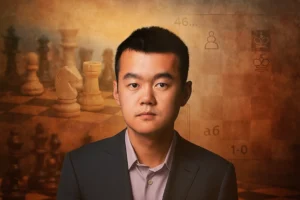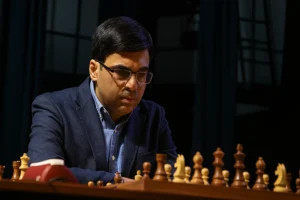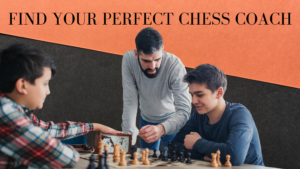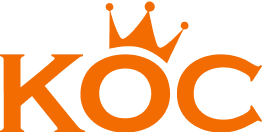The Rise of Freestyle Chess
In recent years, the chess world has witnessed a growing shift in the way the game is approached at elite levels. While classical chess remains a cornerstone of tradition, a new variant—Freestyle Chess, also known as Chess960—is making waves. Popularized by legends like Magnus Carlsen and Hikaru Nakamura, this format scrambles the back rank pieces to create 960 possible starting positions, eliminating the repetitive nature of opening theory.
This naturally leads to the question:
Is opening preparation dead in the age of chess 960?
And more importantly, what does this mean for the future of how we play and learn the game?
Let’s explore how freestyle chess opening preparation is changing modern chess.
The Role of Opening Preparation in Traditional Chess
For decades, opening preparation has been a crucial element in competitive chess. Top players and their teams often spend hundreds of hours preparing deep theoretical lines, hoping to surprise opponents or force draws with black.
- Famous openings like the Sicilian Defense, Ruy Lopez, or Queen’s Gambit have evolved into massive trees of memorized lines.
- Grandmasters use chess engines like Stockfish and Leela to analyze novelties as deep as 30–40 moves.
- A single misstep in the opening phase at top levels can mean instant defeat.
While this depth is a testament to human dedication and computer assistance, it has also led to predictability and, at times, sterility in elite matchups.
Enter Freestyle Chess.
Freestyle Chess: No More Memorization?

In Freestyle Chess, every game starts from a randomized position, where the king is placed between the rooks and bishops/knights are scrambled. This format was first proposed by Bobby Fischer, who was concerned that memorization was overtaking creativity in the game he loved.
With 960 potential setups and no access to pre-memorized engine lines, players must think for themselves from move one.
Here’s how freestyle chess opening preparation differs:
- No fixed lines to memorize
- Must rely on principles like center control, piece development, and king safety
- Emphasizes adaptability and understanding over rote learning
- Levels the playing field, making raw creativity shine
This shift has sparked a movement in the chess community, where players and fans are starting to question the value of traditional opening prep—especially for kids and amateur players.
What the Pros Are Saying
Many elite players have openly praised freestyle chess:
“It’s a different challenge. You can’t just come with memorized lines; you have to play real chess from move one.”
— Magnus Carlsen, after winning the 2024 Freestyle Chess Championship
“I love how it frees you. You’re not repeating someone else’s ideas. You’re forced to think.”
— Hikaru Nakamura, streamer and Grandmaster
In this environment, the freestyle chess opening preparation is less about memorizing engines and more about being mentally agile. The focus shifts to pattern recognition, time management, and practical decision-making under pressure.
What This Means for Chess Students
If you’re a chess learner or a parent of a chess-playing child, this shift has major implications.
Benefits of Freestyle Chess for Learners:
- Encourages real-time decision making
- Builds a deeper understanding of core chess principles
- Reduces reliance on engine prep
- Enhances creativity and confidence
- Makes learning more fun and less mechanical
Chess coaches are already incorporating freestyle formats into their curriculums to prepare students for a future where adaptability matters more than memorization.
In fact, academies like Kingdom of Chess are exploring ways to blend freestyle training into structured lessons, especially for kids between 6–15 years of age.
Is Opening Prep Really Dead?
Let’s be clear: opening preparation is not dead — yet.
In classical and rapid formats, knowledge of openings still plays a vital role. However, freestyle chess is revealing the limitations of over-reliance on opening theory.
Here’s the emerging balance:
- For classical chess, opening prep is still essential at high levels.
- For rapid, blitz, and freestyle formats, understanding and flexibility win.
- For young learners and club players, foundational principles are more valuable than memorizing 30-move lines.
As freestyle chess grows, we may see hybrid models, where players develop general prep strategies for piece development, pawn structures, and opening traps without being bogged down in theory.
The Future of Chess: Creativity Over Memorization?
With the success of the Freestyle Chess Grand Slam Tour, chess federations, streamers, and coaches are taking notice. The game is evolving—slowly, but surely.
In this new era:
- Chess becomes more accessible to casual players.
- Fans see more dynamic games with fewer draws.
- Students learn how to think, not just remember.
The rise of freestyle chess opening preparation marks a turning point in how we approach teaching, learning, and enjoying chess.
The Mindset Shift Has Begun
While opening theory isn’t going away any time soon, freestyle chess is reminding us what chess is truly about—creativity, strategy, and the beauty of thinking over memorization.
Whether you’re a grandmaster or a beginner, this format pushes you to think independently and adapt to the unknown. As freestyle chess continues to grow, expect to see the conversation shift from “What line should I memorize?” to “How do I think better from move one?”
And that, perhaps, is the most exciting future chess could have.






